Discover Pioneer Life at the Museum
Who were those characters? The dreamers and schemers, the planners and builders, the loggers, fishers, ranchers, and farmers—and what was pioneer life like? What drove them to leave loved ones behind and forge a trail to the farthest reaches of the continent? How did they get here, what did they wear, eat, and use to get around?
See a sample of life before computers, cell phones, frozen foods—even before prepackaged sliced bread.
Here’s just a small sampling of what awaits you on your journey of more than 150 years back in time.
![]() Wheelchair Accessible Ramp Behind the Museum
Wheelchair Accessible Ramp Behind the Museum
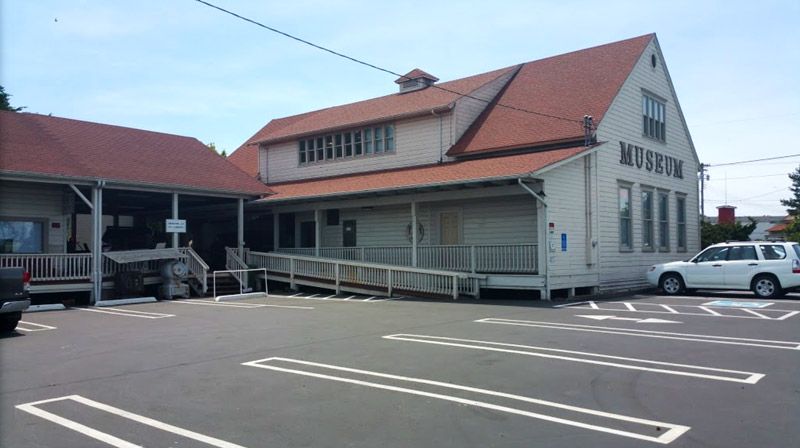
Siuslaw Pioneer Museum, 278 Maple St., Florence, Oregon – Get Directions
A Wheelchair Accessible ramp is located behind the museum
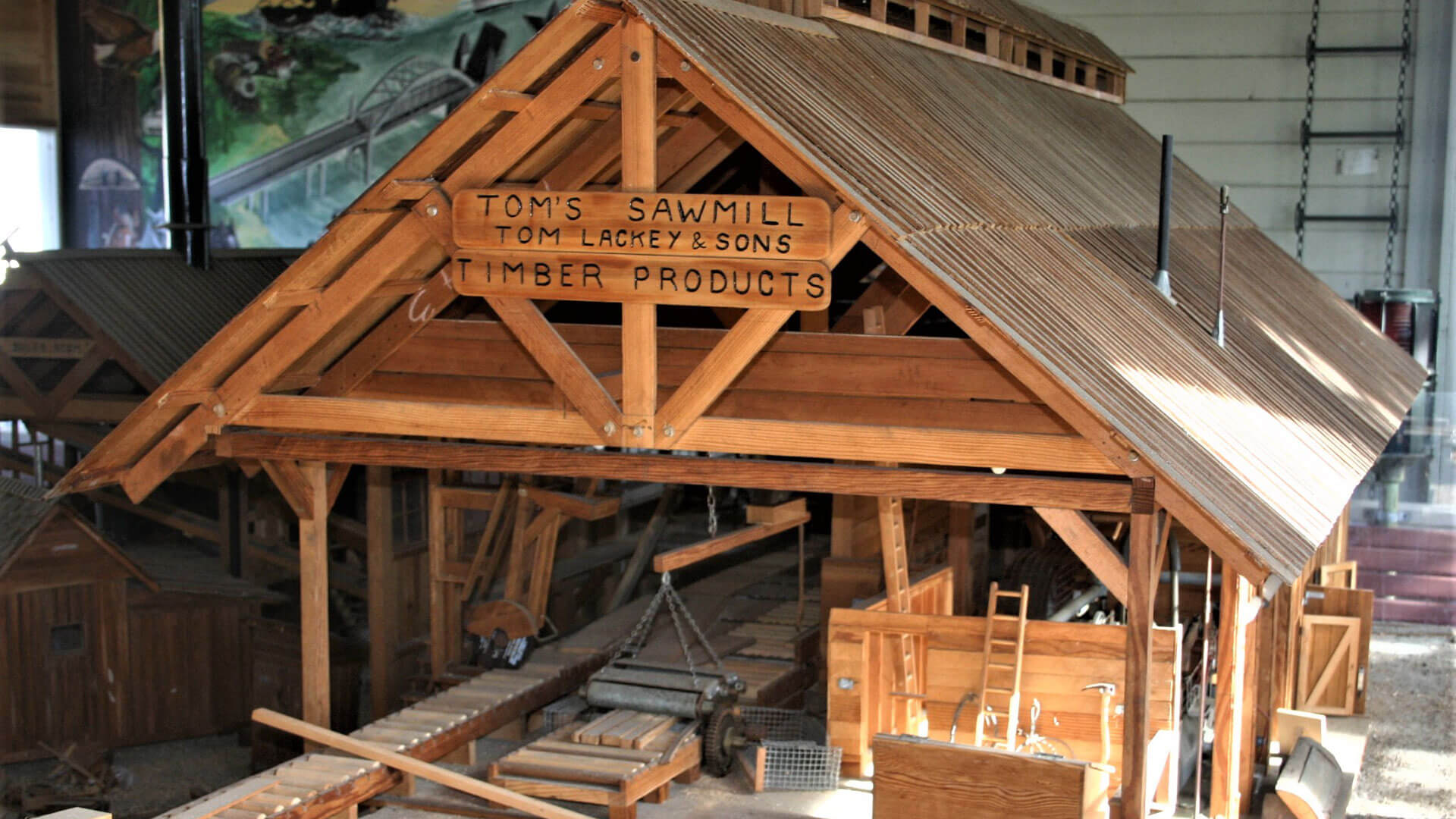
Patio Display Area
Even before you get into the building, your journey begins. Just off the museum parking lot, between the main building and the research/office building, the patio area has many larger objects representative of early Siuslaw Regional history. Included is a large mural portraying a pictorial history of the area, a fishing boat, the Melba J, as well as some of the original control components and lights from the historic Siuslaw River Drawbridge.
Lobby and First Floor
Before you step back in time inside the Siuslaw Pioneer Museum, please sign our guest book—a common practice of polite society in pioneer days that we still practice today!
Within your first few footsteps you will find many photographs and paintings of individuals and families who settled and developed the area. You’ll also see a display of early photographs of neighboring Mapleton (12 miles upriver), antique toy displays, several mastodon teeth (talk about early settlers!), and much more.
Domestic Pioneer Life
Enter the homes of folks who lived in the area and see actual samples of household goods in common use from the late-1800s to the 1970s (we know, that’s not so long ago to some visitors, but it’s ancient to their kids and grandkids who marvel at that period).
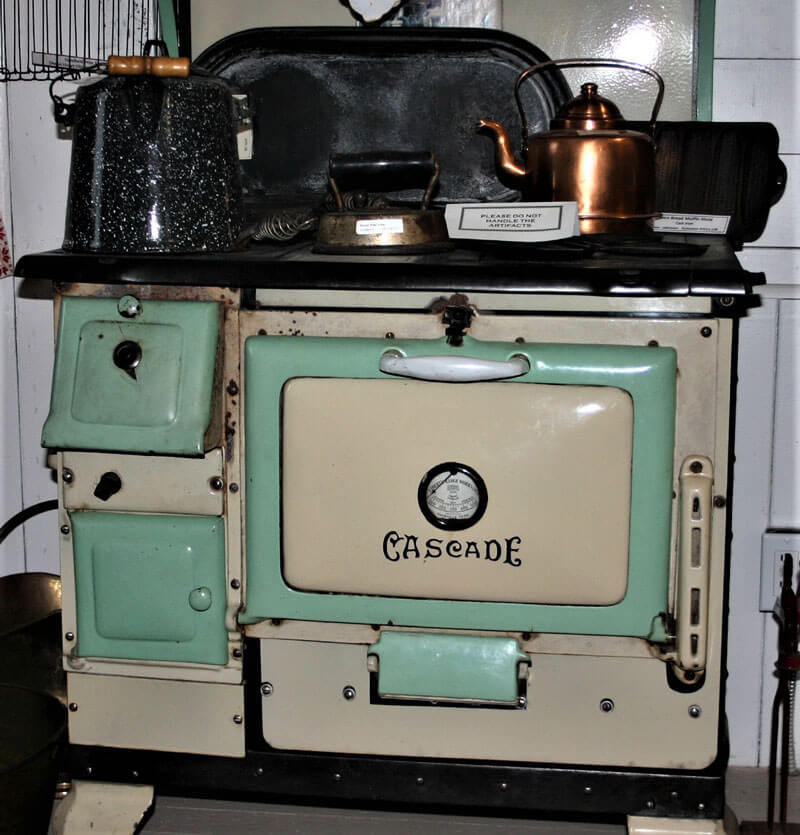
What did pioneers wear?
Clothing (changed on the manikins for each season) and costume jewelry surround you—some made locally, some ordered by catalog (the pioneer’s alternative to Amazon). Keep your eyes peeled for even more fascinating details in the Sewing Room upstairs.

What were their houses like?
See how the furniture, musical instruments, lighting fixtures, lamps, kitchen products, pots and pans, dishes, cooking utensils, kitchen tools, kitchen appliances, and early RCA Victor recording devices and record players compare to what you use today. We think you’ll be thankful for your food processor…and your smartphone. Use it to take some photos of our exhibits.
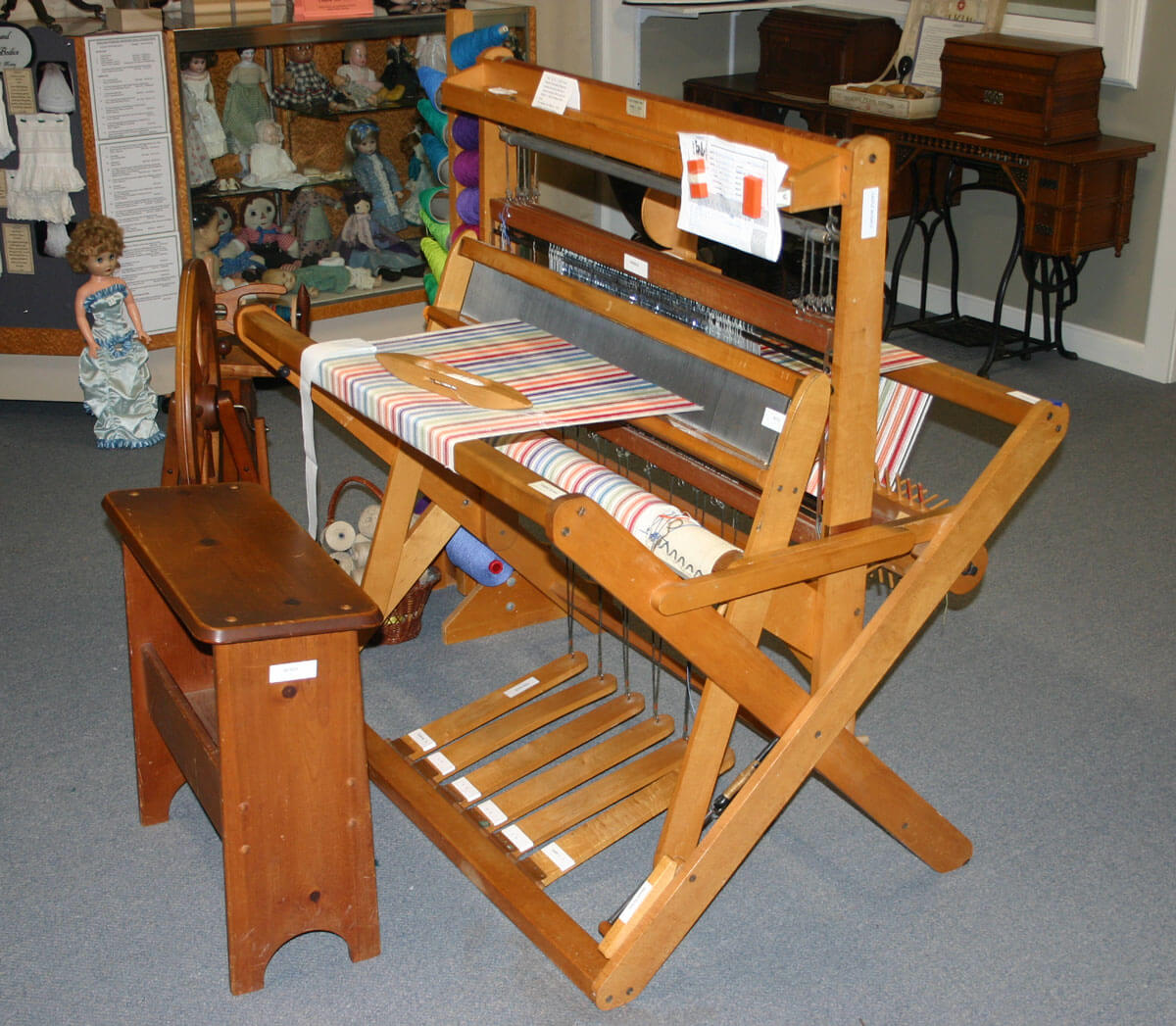
How Folks Supported Themselves
Just off the lobby you can enter the south section of the building that shows how folks in the region supported themselves. Hunting, trapping, gathering, agriculture, fishing, fish canneries, logging, sawmills, shipping, ship building, trade, and commerce were the economic engines of the region.
You’ll see the genuine artifacts with displays that tell the story about these daily activities and the role each played in the growth and development of the area. Along with the video display in the lobby, visitors can view a Siuslaw Pioneer Museum DVD production about the early history of pioneer life in the area and about ships and the maritime trade that carried goods and services to and from the Siuslaw.

Second Floor
After viewing the main floor of the museum, visitors can wind their way up the staircase or utillize the elevator, to the second floor. At the head of the stairs is a collection of cameras, a telephone switchboard and a collection of pictures and artifacts from the region’s schools.
![]() Wheelchair Accessible
Wheelchair Accessible
Business Equipment
Remember the time before you could carry your phone in your pocket? How about wall phones you had to crank to ring a local switchboard operator who would then move and connect a series of cables to place a call for you? Party lines? That fascinating, groundbreaking technology is just part of the display in the Business Equipment section. Who doesn’t remember Ernestine, the sometimes-snarky switchboard operator from the TV show Laugh-In?
You will also discover a collection of furniture and equipment from early local businesses, the post office, and local schools. An Osborne Portable computer, one of the first, is displayed along with a collection of typewriters and other office machinery dating from the late 1890s to the 1960s. The area also has a display of historic photographs of the region.
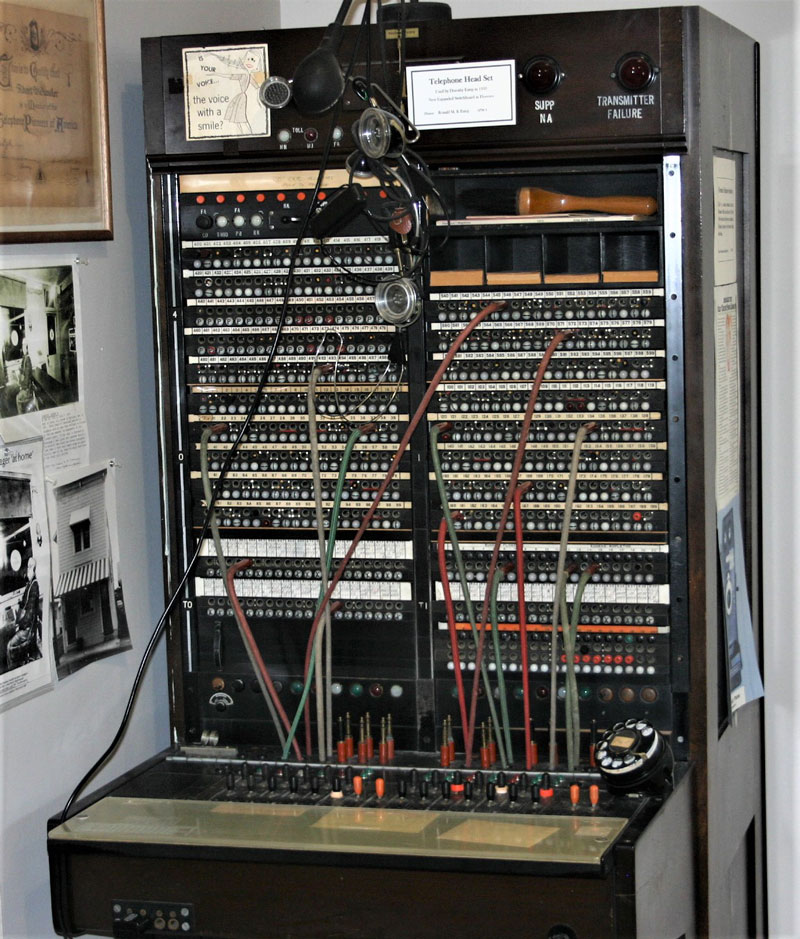
Sewing Room
Back in a day when you couldn’t order clothing online and have it on your doorstep within 24 hours, people actually had the time…and the need… to make their own clothing. Imagine planning ahead for the family’s needs when it took months for fabric or equipment to arrive by stagecoach. See the technology used in pioneer homes at the time and imagine the leg strength necessary to use the treadle and pedal of a sewing machine. Then, imagine the tactile and tactical skills required to make the ladies’ finery and men’s rugged workwear. You’ll also see the full scope of accessory items necessary to clothe the entire family. Many of the items found in this collection are directly from the early homes of the region.

Native American Room
Also on the upper floor you will find many artifacts of local Native American origin. You’ll learn how they made their tools for hunting, storing food, preparing meals, and made their clothing. You’ll see arrowhead displays, basketry, mortars and pestles, clothing, a large and fascinating collection of local shells, and some early photographs from across the region.

